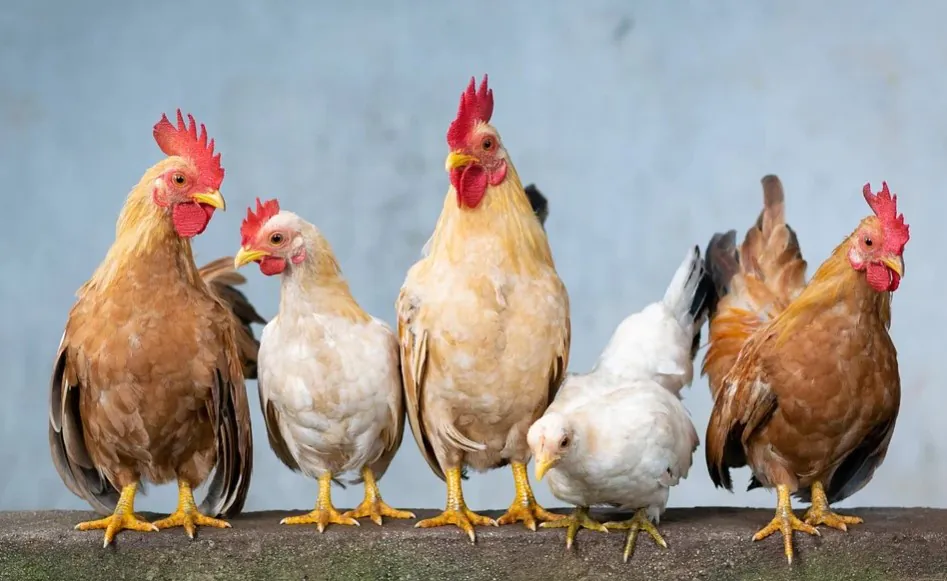The global poultry industry continues to grow with a steady pace in 2020, driven by the rising volume from the top poultry meat producing countries, largest poultry meat exporters and importers around the world. An increasing population, greater purchasing power and urbanization have also been strong drivers for the growth in the global poultry meat production and poultry meat consumption over the recent decades.
Apart from being a great source of protein, poultry meat is also rich with phosphorus and other minerals, and of B-complex vitamins. It has less fat than most cuts of beef and pork. Poultry meat is low in harmful trans fats, but high in beneficial monounsaturated fats, therefore the demand of the poultry meat around the world is expected to maintain a strong and steady growth over the next few years.
Bizvibe’s smart B2B marketplace solutions help buyers and suppliers in the global poultry industry to find and connect with each other, shorten sourcing and purchasing cycles, and maximise profit growth. Join today to see how BizVibe can help your business grow!
Global Poultry Industry Overview
The global poultry market was valued at US$ 267.3 billion in 2018, and is expected to exhibit a CAGR of 3.0% by 2027, according to the recent market report from Coherent Market Insights. The market growth is owing to factors such as rising production and consumption of poultry meat, which is expected to drive growth of the poultry market over the forecast period.
Among regional markets, Asia Pacific held dominant position in the world and accounted for 27.3% share in the global poultry market revenue in 2018. Asia Pacific accounts for the major share of the global population, which results in generating higher demand for poultry products such as meat and eggs. According to the Food & Agricultural Organization (FAO), China recorded a per capita poultry consumption of 11.6 kg in 2018, one of the highest in the world. This is expected to drive growth of the Asia Pacific poultry market over the forecast period.
Rapid growth in consumer demand for livestock products in emerging economies such as China and India is expected to fuel the growth of poultry meat and egg production and consumption in the global poultry market. According to the United States Department of Agriculture (USDA), chicken meat production in China was pegged at 700,000 metric tons in 2017, and it increased by 11.7 million metric tons in 2018; and broiler meat consumption increased by 1% in 2018 compared to 2017.
Top Poultry Meat Producing Countries in 2019
| Rank | Country | Production (1,000 Metric Tons) |
| 1 | US | 19,710 |
| 2 | Brazil | 13,800 |
| 3 | EU | 12,470 |
| 4 | China | 12,000 |
| 5 | India | 5,100 |
| 6 | Russia | 4,780 |
| 7 | Mexico | 3,600 |
| 8 | Thailand | 3,250 |
| 9 | Turkey | 2,275 |
| 10 | Argentina | 2,180 |
The global chicken meat industry consists of many different production levels including feed mills, hatcheries, growing farms, and processing plants. In 2017 there were 22.85 billion chickens worldwide, up from 14.38 billion chickens in 2000. The United States of America is the world’s largest poultry meat producer, with 18 percent of global output, followed by Brazil, EU and China
Top Facts in the Global Poultry Meat Industry
- To meet growing demand, world poultry meat production soared from 9 to 122 million tonnes between 1961 and 2017, and egg production shot up from 15 to 87 million tonnes.
- In 2017, poultry meat represented about 37 percent of global meat production. Poultry is now the world’s primary source of animal protein, followed by pork.
- In the last three decades, world egg production has increased by more than 150 percent. Much of this growth has been in Asia, where production increased almost fourfold.
- Poultry is raised by approximately 80 percent of rural households in developing countries.
- Between 2000 and 2030, per capita demand for poultry meat is projected to increase by 271 percent in South Asia, 116 percent in Eastern Europe and Central Asia, 97 percent in the Middle East and North Africa and 91 percent in East Asia and the Pacific.
- Worldwide, there will be 35 percent more demand for animal protein in the next 20 years. Poultry will see the largest increase, about 2 percent, while expansion for eggs will be 1.6 percent; seafood, 1.2 percent; beef, 1.1 percent; and pork, 1 percent.
- Consumer demand is changing while economies develop; wealthier countries consumer more meat. Australia has the highest global per capita consumption of meat in the world.
- Social changes can affect the outlook for animal protein markets: Retail sales of meat substitutes are highest in Asia-Pacific and lowest in Latin America.
- The cost of poultry production varies significantly from region to region. The cost of live broiler production is the highest in Japan and lowest in Brazil.
- Brazil’s meat and poultry industry are seeing challenging market conditions. Brazil is very export focused, but facing trade challenges in several regions.
- There is a lot of volatility coming from Europe and the Mideast. EU chicken imports from Brazil are down 50 percent, while the EU increases imports from Ukraine.
- U.S.-China tariff battles will further shake up trade in Brazil. China imports 62 percent of the global soybean trade and is importing more soy from Brazil and Argentina.
- Outbreaks of African swine fever (ASF) in China will affect pork markets and the industry structure in the coming years. ASF is “going to have a huge impact on global markets,” Mulder said.
- Because it has been very difficult in recent years to import grandparent broiler stock into China, the demand for chicken will not be supported by enough supply.
- South and Southeast Asia will be the key global markets for growth, including Indonesia, Myanmar, the Philippines, Vietnam and India.
- Excluding Brazil, Latin America is offering some of the fastest-growing poultry markets in the world.
- Poultry markets in Africa will rise 5 percent annually in the next decade. The biggest growth will be in South Africa and Nigeria.
- Social concerns are opportunities to differentiate markets. Food safety, animal welfare, environment, consumer health and local supply are big trends.
Source: FAO & “Global poultry and feed outlook: Key investment trends shaping the industry in 2019”
Largest Poultry Meat Exporting Countries in 2019
| Rank | Country | Export Volume (1,000 Metric Tons) |
| 1 | Brazil | 3,775 |
| 2 | US | 3,248 |
| 3 | EU | 1,500 |
| 4 | Thailand | 900 |
| 5 | China | 475 |
| 6 | Turkey | 400 |
| 7 | Ukraine | 350 |
| 8 | Belarus | 185 |
| 9 | Russia | 180 |
| 10 | Argentina | 145 |
The global poultry meat exports are forecast 4 percent higher in 2020 to a record 12.5 million tons, according to USDA. Expansion is largely due to increased China demand which will propel Chinese imports up by 20 percent in 2020. Brazil and Thailand will make the greatest export gains in China as highly pathogenic avian influenza (HPAI)-related restrictions keep other major suppliers such as the United States out of that market. The Philippines imports are forecast up 27 percent as consumers transition from pork to increasingly price-competitive chicken.
Largest Poultry Meat Importing Countries in 2019
| Rank | Country | Import Volume (1,000 Metric Tons) |
| 1 | Japan | 1,175 |
| 2 | Mexico | 860 |
| 3 | EU | 680 |
| 4 | Saudi Arabia | 675 |
| 5 | Iraq | 640 |
| 6 | China | 575 |
| 7 | South Africa | 545 |
| 8 | UAE | 415 |
| 9 | Philippines | 340 |
| 10 | Angola | 340 |
Japan is currently the largest poultry meat importer in the world. USDA reported that, through the first half of 2019, total chicken imports in Japan trended three percent lower than the previous year as imports fell from all three of Japan’s main suppliers: Brazil, Thailand, and China. Japan remains heavily dependent on these three countries which together accounted for 98 percent of Japan’s chicken imports (see Table 2). Imports from Brazil, which supplies the bulk of Japan’s chilled and frozen chicken meat, dropped one percent due to reduced domestic processing demand as well as import competition from other countries, including China.
Join BizVibe, and discover thousands of world’s leading poultry meat suppliers and buyers today!



